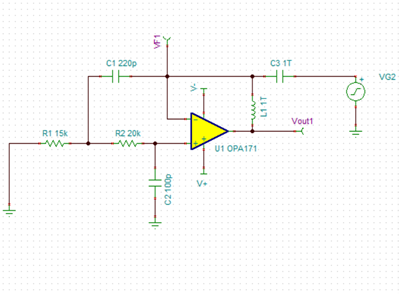Other Parts Discussed in Thread: TI-PLABS-AMP-EVM, OPA188, OPA140, OPA211, , OPA171, THS4561, OPA365
Hi all,
I'm using circuit 8 of TI-PLABS-AMP-EVM to test a real customer's circuit.
The circuit 8 is as follow:

Test condition 1: Use the circuit 8 for test, no matter I use OPA277 or OPA188 or OPA171 or OPA140 or OPA211, the output is always equal to the input, which is as expected. (6.5V single supply and the input is 2.5V DC)
Test condition 2: In the real application, there are some conditions that the C27 will be hit and broke. In order to reproduce this condition, I removed C27 from the EVM board and test again. The final test circuit is as follow:

And this time, there are many different issues occur.
- When opamp is OPA277, the yellow line is DC input of 2.28V, the blue line is output, there is a 3.5Vpp oscillation:

- When opamp is OPA188, the yellow line is DC input of 2.28V, the blue line is output, there is a 0.25Vpp oscillation:

- When opamp is OPA171, the yellow line is DC input, the blue line is output, when the input fluctuates, the output will also fluctuate a little:

- When opamp is OPA140 or OPA211, the output is always equal to the input:

So would you please help me to answer the two questions?
1. Why there comes so many stable issues of opamp when I removed C27 and what the root cause of it?
2. Why OPA140 and OPA211 still stable in the test condition 2 while OPA277 and OPA188 have oscillation issues? Which spec of opamp prevent the OPA140 and OPA211 from being oscillation ?
Thank you very much.










